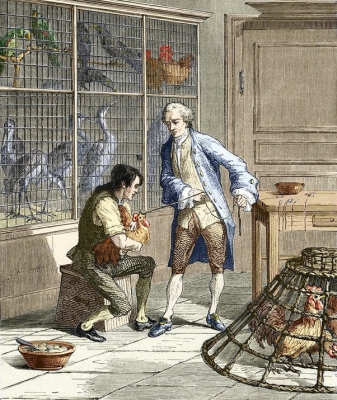Does meat rot in your stomach?

This question was already answered more than two centuries ago in the late 1700s by an eccentric Italian scientist, Lazzaro Spallanzani. At the time, the leading theories were that food either fermented, rotted or was crushed to little pieces within the stomach. Spallanzani was the first to conduct extensive observations on digestion within the living body of animals, himself among them.
He fed birds with food in perforated containers which had a long piece of string attached. He would then pull out the containers from the poor birds after a varying number of hours. From his results, he concluded that a major part of digestion is the solvent action of fluids in the stomach. He named these fluids gastric juice.
To demonstrate the direct effect, he extracted a large quantity of gastric juice from the stomachs of birds and placed chewed food in the juice and kept it at body temperature for three days. By repeated additions of gastric fluid, the food eventually became completely dissolved.
Not satisfied with the bird results, he experimented on himself! He would place small pieces of food inside tiny linen bags, sewing them up, swallowing them and inspecting what emerged at the other end the next day. He sometimes swallowed the semi-digested meat the second or third time (yikes…).
The linen bag passed through him without causing any trouble and the content disappeared the next day. In another experiment, he waited three hours after swallowing a tube containing beef and vomited it back up, to prove that digestion occurs in the stomach, not the intestines. Finding the beef had already turned soft, he confirmed his prediction. Apparently, even he was grossed out by this experiment and couldn’t do it again.
The speed of the process suggested that the meat had neither fermented nor rotted but had been dissolved by gastric juices through the cloth. We now know Spallanzani was correct: the hydrochloric acid in the gastric juice breaks down the meat and the digestive enzymes split up the proteins. The acidic gastric juice also kills bacteria, the agent behind ‘rotting’. The proteins and fats are broken down further into amino acids and fatty acids in the small intestine and get absorbed through the digestive wall into the bloodstream. There’s nothing left to rot.
Credit : Quora
Picture Credit : Google
Comments
No comments